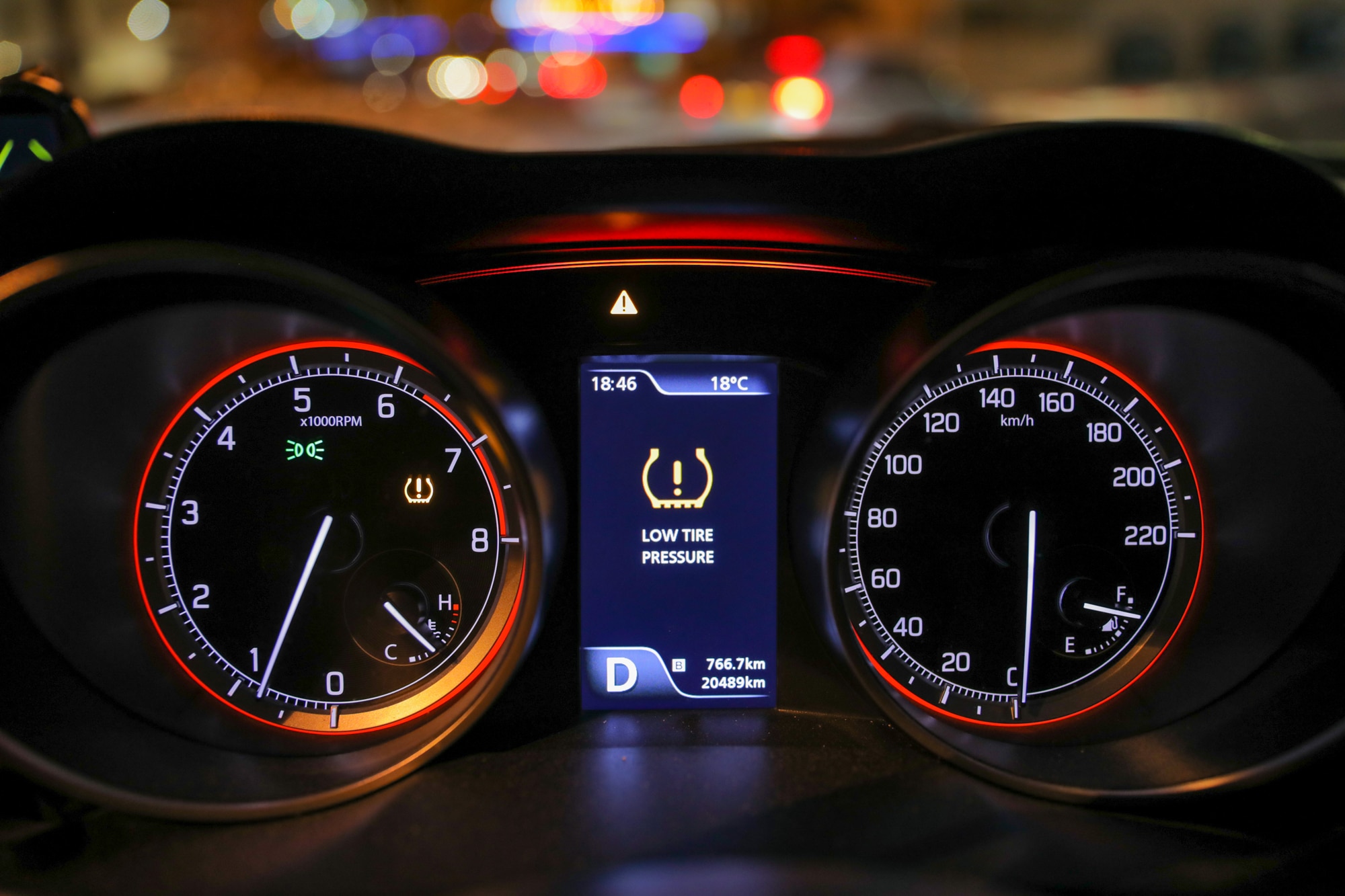How to Set Your Tire Pressure Properly
For the sake of safety and your wallet, you should care about how much air is in your tires.
 Shutterstock
Shutterstock
Tire pressure is important to the safe and efficient operation of your vehicle, as it determines the size of your contact patch—that is, the section of tire that touches the road and provides grip and traction. If there’s too much air in a tire, its contact patch could shrink and lead to reduced grip, a harsher ride, and premature wear. Underinflation may result in wider-than-optimal contact patches. This can negatively affect handling, dampen steering response, hasten tire wear, increase fuel consumption, and even trigger tire failure from overheating or damage to the sidewall.
What Should My Tire Pressure Be?
To find the correct pressure for the factory-provided tires, look at the label attached to the driver’s-side door jamb or consult the owner’s manual. Sometimes, recommended pressures will differ for front and back tires, especially on pickup trucks or vans that haul large loads. High-performance cars with speed-rated tires may also have special inflation instructions for track driving, as the higher the speed, the higher the tire pressure needs to be.
If you slap on an aftermarket set of tires, you’ll need to consult the tire manufacturer’s materials. A smaller-diameter or lower-profile tire, for example, will likely have different optimal tire pressures than the original tire.
Pro tip: Don’t just fill the tires to the psi number molded into the tire sidewall. This represents the maximum pressure that the tire can accommodate and isn’t necessarily the best one for your vehicle.
How to Check Your Tire Pressure
Most modern vehicles have a tire-pressure-monitoring system, which uses sensors in the tires to determine when the pressure drops to an unsafe level. If a sensor indicates one of your tires needs air, a yellow warning light (often resembling a flat tire with an exclamation point inside it) will appear in your instrument panel. This is the signal that you need to check your pressures.
To do this, you’ll need a tire-pressure gauge, which comes in digital or analog form. To get a pressure reading, simply push the gauge tip onto each tire’s valve stem (removing the cap first, if need be). Be sure to do this when the tires are cold (i.e., unwarmed by the sun or recent driving). That’s because heat may increase a tire’s pressure by up to 4 psi. You’ll also want to check your tire pressures as the weather shifts: For every 10 degrees of change in the ambient temperature, the tire pressure changes by about 1 psi.
Tire experts recommend that you proactively check your tire pressure every four weeks. Apart from changes in temperature, potholes and other daily driving bumps and bruises can cause air to slowly leak from a tire.
How to Reset a Tire Pressure Warning Light
When the TPMS light comes on, it means the pressure in one or more of your tires is too low. More often than not, once you’ve filled the tires to the correct pressures, restarted the vehicle, and driven for a few minutes, the warning light will turn off. If the light stays on, you can try overinflating your tires by 3 psi then removing that extra pressure, but that’s an admittedly, er, tiresome task. We recommend consulting the owner’s manual to locate the TPMS reset button and step-by-step directions on how to use it.
Written by humans.
Edited by humans.
 Mark Hacking
Mark HackingMark Hacking is an award-winning writer with more than 20 years experience covering the automotive scene for some of the world's most popular publications. Mark holds an FIA International Race license and has his sights set on competing in the Rolex 24 at Daytona in the future. He was the first automotive journalist to race in the Ferrari Challenge series (in 2013) and the Jaguar I-PACE eTrophy series (in 2019).
Related articles
View more related articles